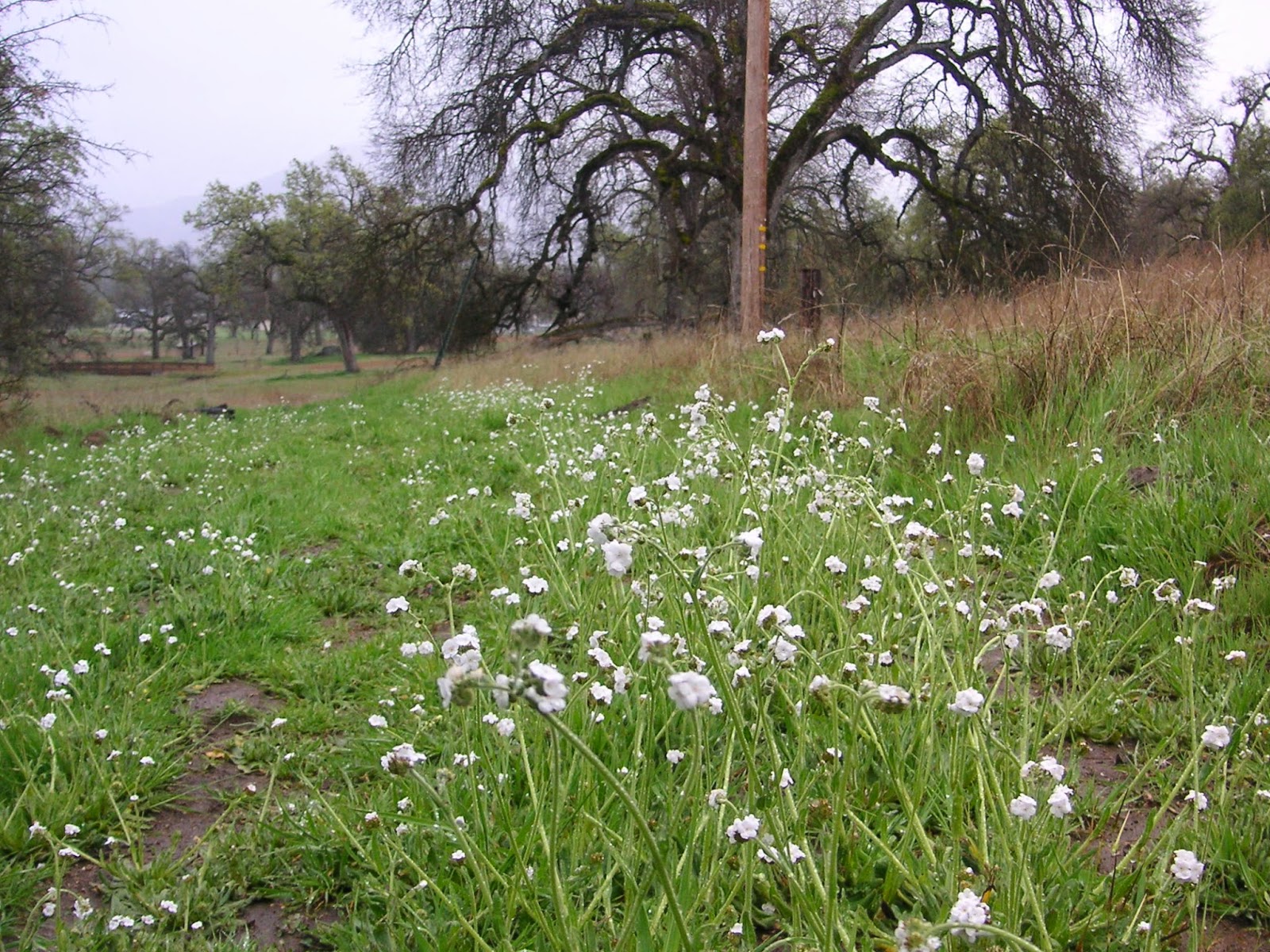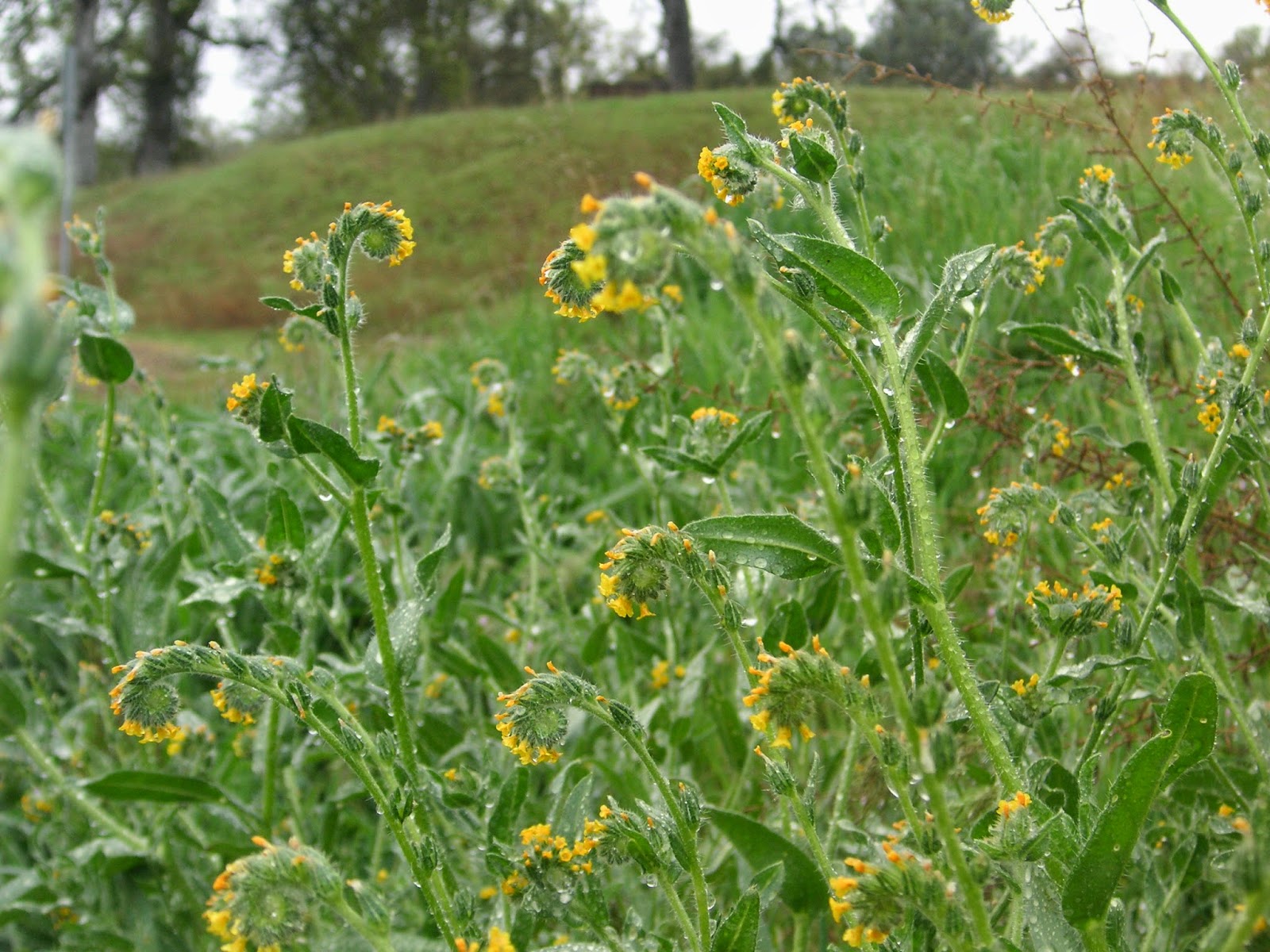Here's another local gem we found while driving around, ostensibly in an attempt to find a restaurant that was actually open after our hike at Lewis Creek. Since
our stomachs insisted on being filled, we planned to return the next
day. Sure enough, plans? Rain. I guess I should be celebrating that
my rain curse has returned. Not to be deterred, Andy kindly served as my
umbrella holder while I attempted to take pictures of flowers in the
rain.
Ahwahnee Hills is less than 7 crow miles from and maybe 1000 feet lower in elevation than Lewis Creek. It's a completely different type of habitat. I appreciate the diversity. Give a couple weeks, better lighting, and this place could offer great glamour shots for the spring months of any CA wall calendar. Come to find out, Ahwahnee Hills only recently opened March 15, 2014 after 20 years of planning. It's another public-private partnership, a trend I see more and more these days of little public money. I had forgotten that federal parks closed temporarily last fall, including Yosemite, as this Sierra Star writer mentions in his review of Ahwahnee Hills. I can totally see why people buy vacation property in the area. It's a lovely place, even in the rain.


















